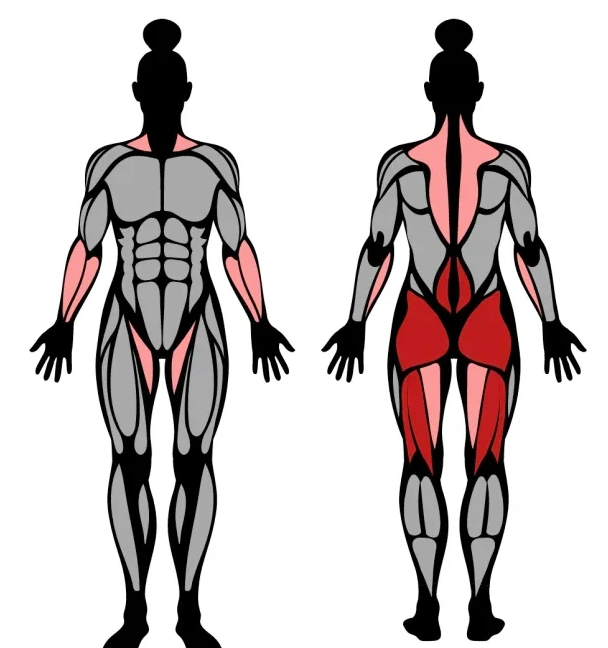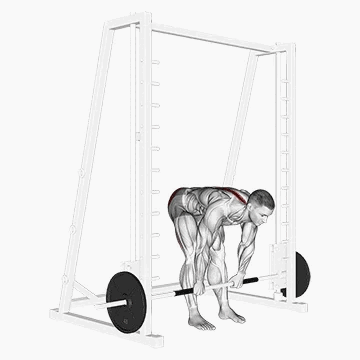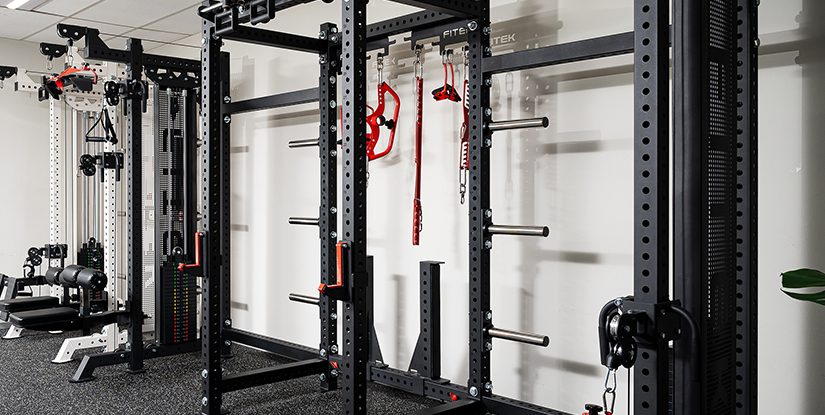Smith machine stiff leg deadlift is a simple move that really hits your hamstrings and glutes. If you’ve been squatting, deadlifting, doing curls—but still not feeling much in the back of your legs—this is worth trying.
A lot of people feel deadlifts more in their lower back. Or their form’s off. The Smith machine makes it easier. You don’t have to worry about balance. Just focus on the stretch and squeeze.
It’s easy to learn and it works. That’s the best part.
In this article, I’ll show you what the exercise is, how to do it right, what to avoid, and how to fit it into your workouts.
Let’s get into it.
What is the Smith Machine Stiff-Leg Deadlift
The Smith machine stiff leg deadlift is a leg exercise where you bend at the hips with nearly straight legs to stretch and train the back of your legs.
It’s done on a Smith machine, which keeps the bar moving in a straight line for better control.
✅ What muscles does it work?

This move mainly targets the back of your legs, especially the:
- Hamstrings – they stretch on the way down and pull you back up
- Glutes – help you stand up and lock out at the top
- Lower back – works a bit to keep you stable
You won’t feel much in your quads. This is all about the back side of your body.
✅ Why is it useful?
- You don’t need to balance the bar—the machine keeps it steady
- Easier to focus on form, especially for beginners
- Less stress on your lower back compared to regular deadlifts
- Great for feeling that deep hamstring stretch and glute squeeze
- Good for shaping the legs, not just building size
If you’ve ever done squats or deadlifts and thought, “I don’t feel it where I’m supposed to,” this version can help you fix that.
How to Do a Smith Machine Stiff-Legged Deadlift
Doing a Smith machine stiff-legged deadlift isn’t hard, as long as you follow a few simple steps.

1. Set your position
- Stand inside the Smith machine, feet about hip-width apart
- Toes can face forward or slightly outward
- Set the bar at mid-thigh height
- Reach down and grab the bar just outside your legs, with your palms facing down
- Stand tall—back flat, chest up, core lightly braced
- Keep a soft bend in your knees—don’t lock them
2. Lower the bar
- Take a breath and push your hips back
- Let the bar travel down the front of your legs
- Keep it close — don’t let it swing forward
- Lower slowly until you feel a strong stretch in your hamstrings (usually mid-shin)
- Back stays straight the whole time
3. Return to standing
- Drive your hips forward to come back up
- Squeeze your glutes at the top
- Don’t lean back or overextend
✅ Extra tips
- Go slow and stay in control
- Start light and focus on form first
- If you feel it in your lower back, check your posture
- Keep the bar close to your body for the whole rep
Common Mistakes When Doing the Deadlift
It seems easy—but if your form’s even a little off, you’ll feel it in all the wrong places.
Here’s what to avoid.
| ❌ Mistake | 😖 What Happens | ✅ Fix It |
|---|---|---|
| Locking your knees | Loads your joints instead of your muscles | Keep a slight bend at all times |
| Rounding your back | Puts pressure on your spine, not your legs | Keep chest up, back flat, and hinge from your hips |
| Going too low | Breaks form, reduces hamstring focus | Stop at mid-shin or when you feel a strong stretch |
| Moving too fast | Kills control and muscle tension | Slow down, feel each rep, focus on control |
| Letting the bar drift forward | Pulls you out of position, adds strain | Keep the bar close—let it slide along your legs |
💡Clean up these little mistakes, and you’ll feel it way more in your hamstrings—not your back.
Smith Machine Stiff Leg Deadlift Workout Plan
Once you know how to do the smith machine stiff leg deadlift, the next step is using it the right way. It works best on leg day when you want to focus on hamstrings and glutes.
| Goal | Sets & Reps | Tip | Pair with |
|---|---|---|---|
| Muscle building | 3–4 sets of 8–12 | Go slow, full stretch and squeeze | Hip thrust, leg press |
| Glute focus | 3–4 sets of 12–15 | Lock out your hips | Kickbacks, glute bridges |
| Strength | 4 sets of 5–8 | Use solid form and tension | Squats, barbell RDL |
| Beginner | 2–3 sets of 10–12 | Start light, learn control | Bodyweight hinge, dumbbell RDL |
💡 You can place it after squats or lunges, or use it on its own. Just keep your form clean and focus on feeling your hamstrings work.
You’ve got the form, you know where it fits—now just put it into your strength training.
No need to overthink it. Go light, feel your hamstrings, and let the form do the work.
This isn’t about going heavy. It’s about doing it right.
Add it to your next leg day and give it a real shot. You’ll feel the difference.

Hi, I’m Alex Carter, part of the editorial team at Leadman Fitness. We specialize in crafting premium custom racks, cable machines, functional trainers, and strength accessories for home and commercial gyms. With a background in competitive powerlifting and gym design consulting, I’ve spent years testing gear under heavy loads and optimizing layouts for efficiency.
I focus on translating real-world user frustrations—like space limitations, budget constraints, or durability needs—into actionable solutions. By collaborating directly with our engineers and facility owners, I ensure our custom equipment evolves to solve the unspoken challenges lifters face daily. What I share isn’t textbook advice; it’s battle-tested insight from racks I’ve welded, cables I’ve replaced, and gym floors I’ve trained on.
